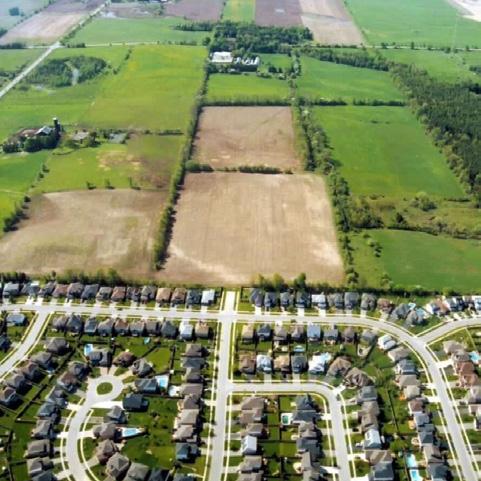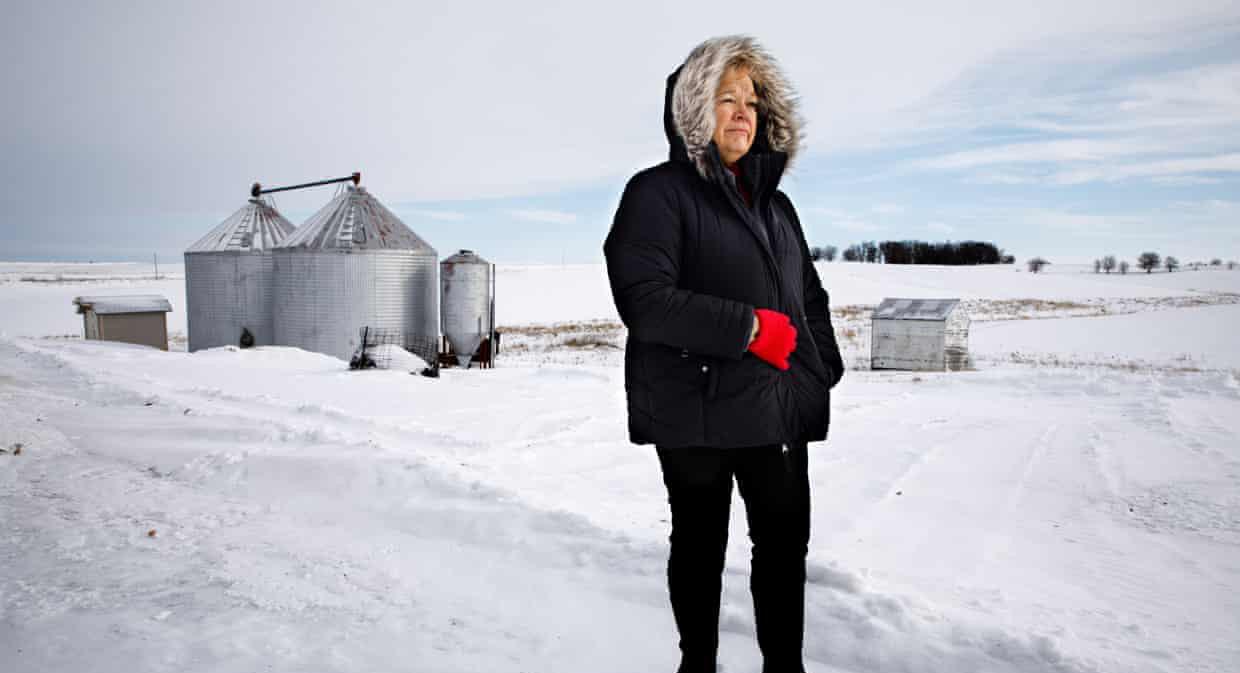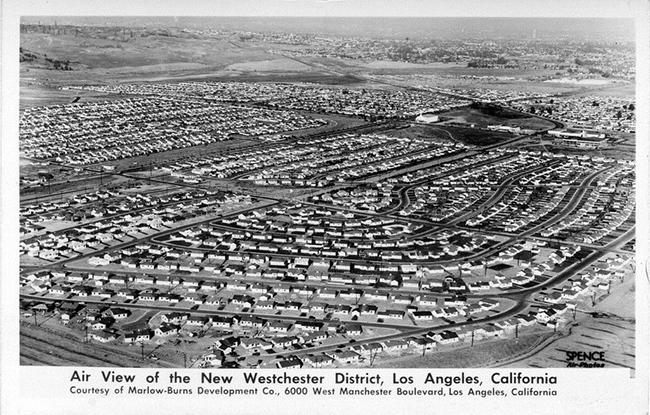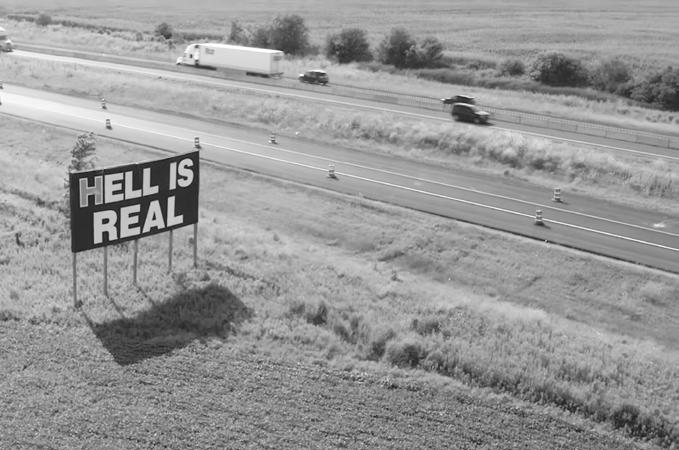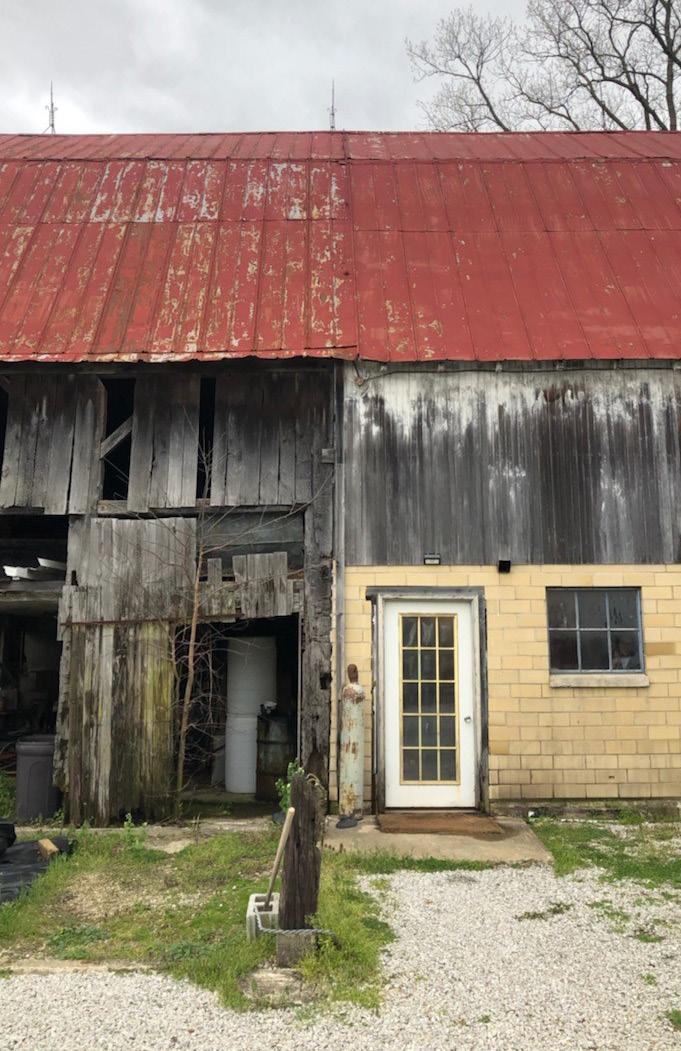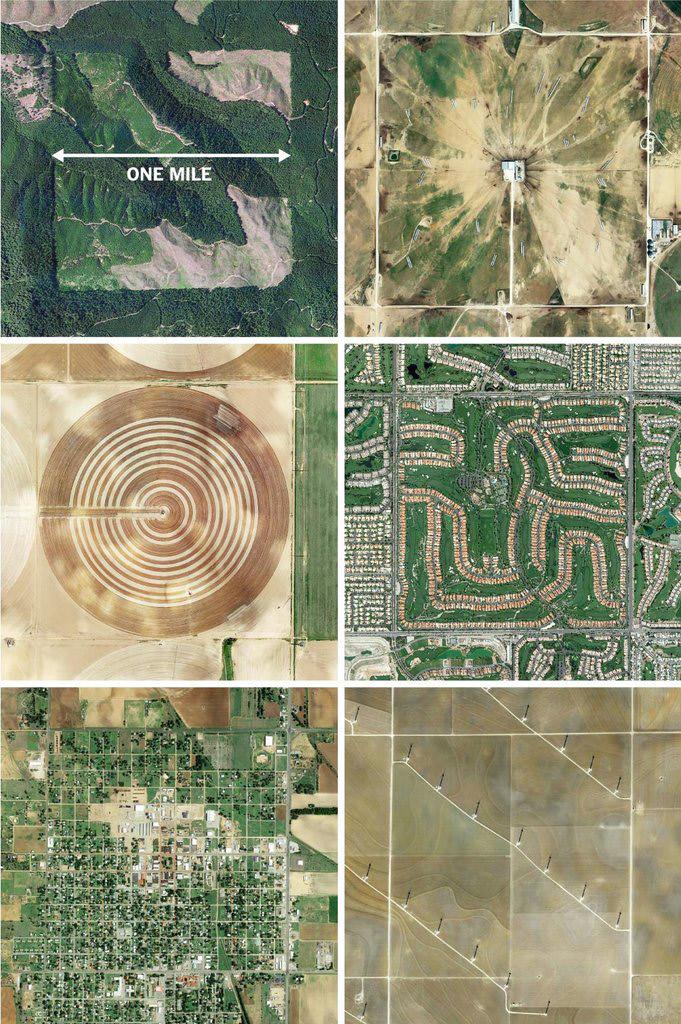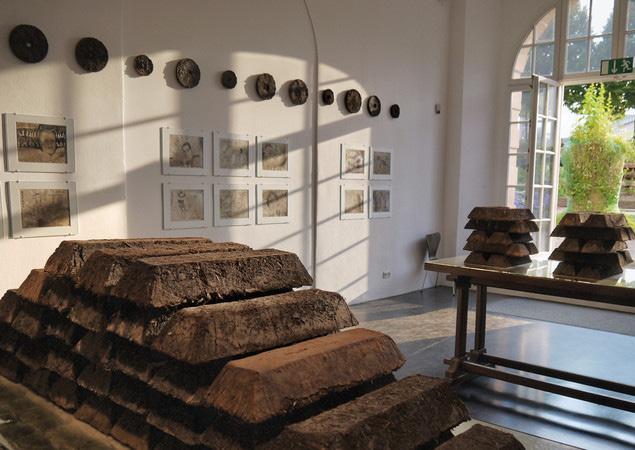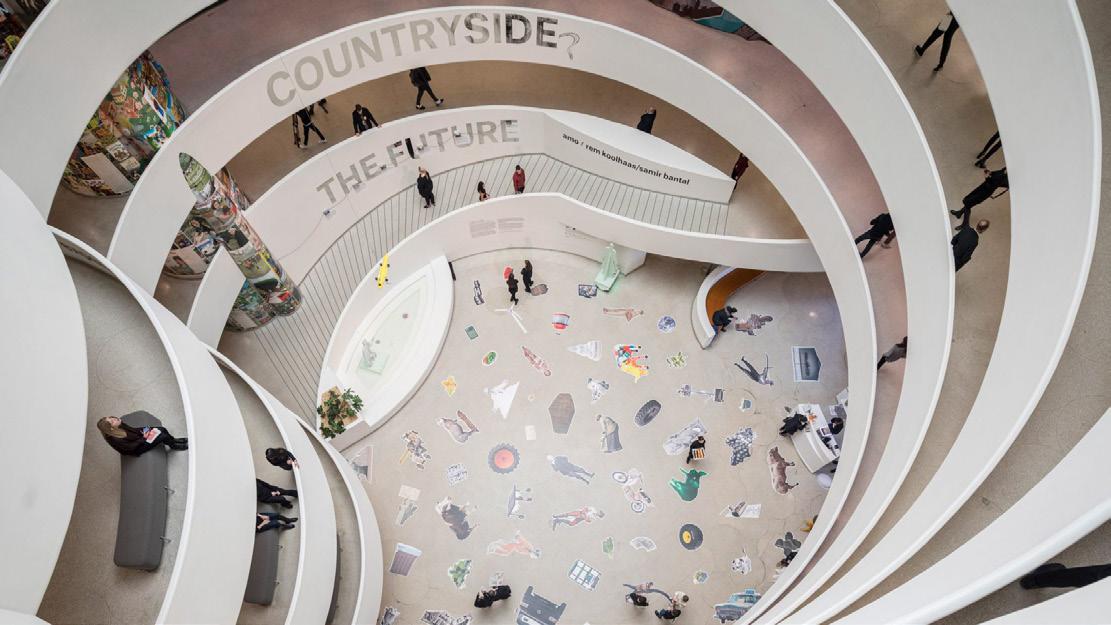
3 minute read
5.1 - Rem’s ‘Countryside
from Residual Farmland
by clareknecht
“This show has nothing to do with art, nothing to do with architecture. It’s a show about sociality, anthropology and politics.”
-Rem Koolhaas on his exhibition at the Guggenheim
Advertisement
Countryside, The Future opened February 20th, 2020 and was on show for six months at the Guggenheim Museum in New York City. The following information was gathered from Dezeen’s coverage of the event as well as the Guggenheim’s web page. A central thesis of the exhibition is that the current form of urban life has necessitated the organization, abstraction, and automation of the countryside at an unprecedented scale. Data storage, fulfillment centers, genetic engineering, artificial intelligence, robotic automation, economic innovation, worker migration, and the private purchase of land for ecological preservation are in many cases more actively explored and experimented with in the countryside than the city.
“In the past decade, I have noticed that while much of our energies and intelligence have been focused on the urban areas of the world, the countryside has changed dramatically under the influence of global warming, the market economy, American tech companies, African and European initiatives, Chinese politics, and other forces. This story is largely untold, and it is particularly meaningful for AMO to present it in one of the world’s great museums in one of the world’s densest cities.”
-Rem Koolhaas
The exhibition begins the way the accompanying book ends: with a tapestry of questions, almost a thousand in total, that simultaneously declare the thoroughness of the investigation and a still-unsated curiosity for the countryside, or what Rem Koolhaas calls an ‘ignored realm.’ Ignored by whom? Rem, for one. The declaration isn’t hubris, it’s a challenge for us all, countryside inhabitants and experts included, to think anew about what may seem foreign or familiar.”
[Image 22] The Guggeheim exhibtion of Countryside, The Future (Dezeen)

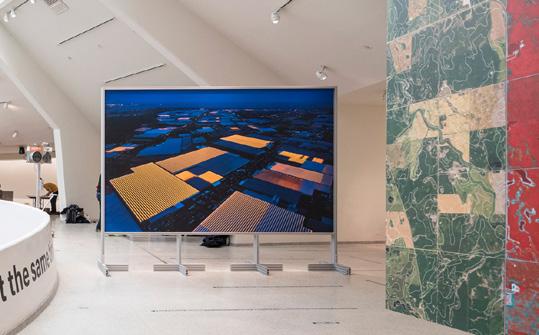
As the exhibition unfolds, it addresses questions about the development and role of the countryside over time: What was the countryside historically, what did the major political figures of the twentieth century prepare for us, what is the current condition, what needs to be done for the future, and in what ways could this take shape? “Semiotics Column,” created by journalist Niklas Maak with students at the Harvard Graduate School of Design, in which one of the few vertical elements of the Guggenheim Museum building is plastered with a matrix of images from advertisements, fashion campaigns, toys, and country music to illustrate fantasies and stereotypes of rural life.
[Image 23] The Guggeheim exhibtion of Countryside, The Future (Dezeen)



Level 3: Political Redesign
Through a series of eight case studies focused on the twentieth century, this section provides representative examples of “political redesign,” the application of political will and vision to the transformation of the countryside at territorial scale. Such acts, proposed and effected by various political regimes, are profiled, from dictatorship to democracy.
Level 4: (Re-)Population
This section considers the countryside as a frontier for experimentation. A carousel of photographic evidence, paired with firsthand texts and stories by and from locals, As Koolhaas notes in the exhibition text: What we collect here is evidence of new thinking—in China, in Kenya, in Germany, France, and Italy, in the US:
As soon as we leave the urban condition behind us, we confront newness and the profoundly unfamiliar.
new ways of planning, new ways of exploring, new ways of acting with media, new ways of owning, paying, renting, new ways of welcoming, new ways in which the countryside is inhabited today.”
Level 6: Cartesianism
The street grid, an imposition of mathematical abstraction on varied terrains and unruly human affairs, has been seen as the hallmark of urban rationalism

